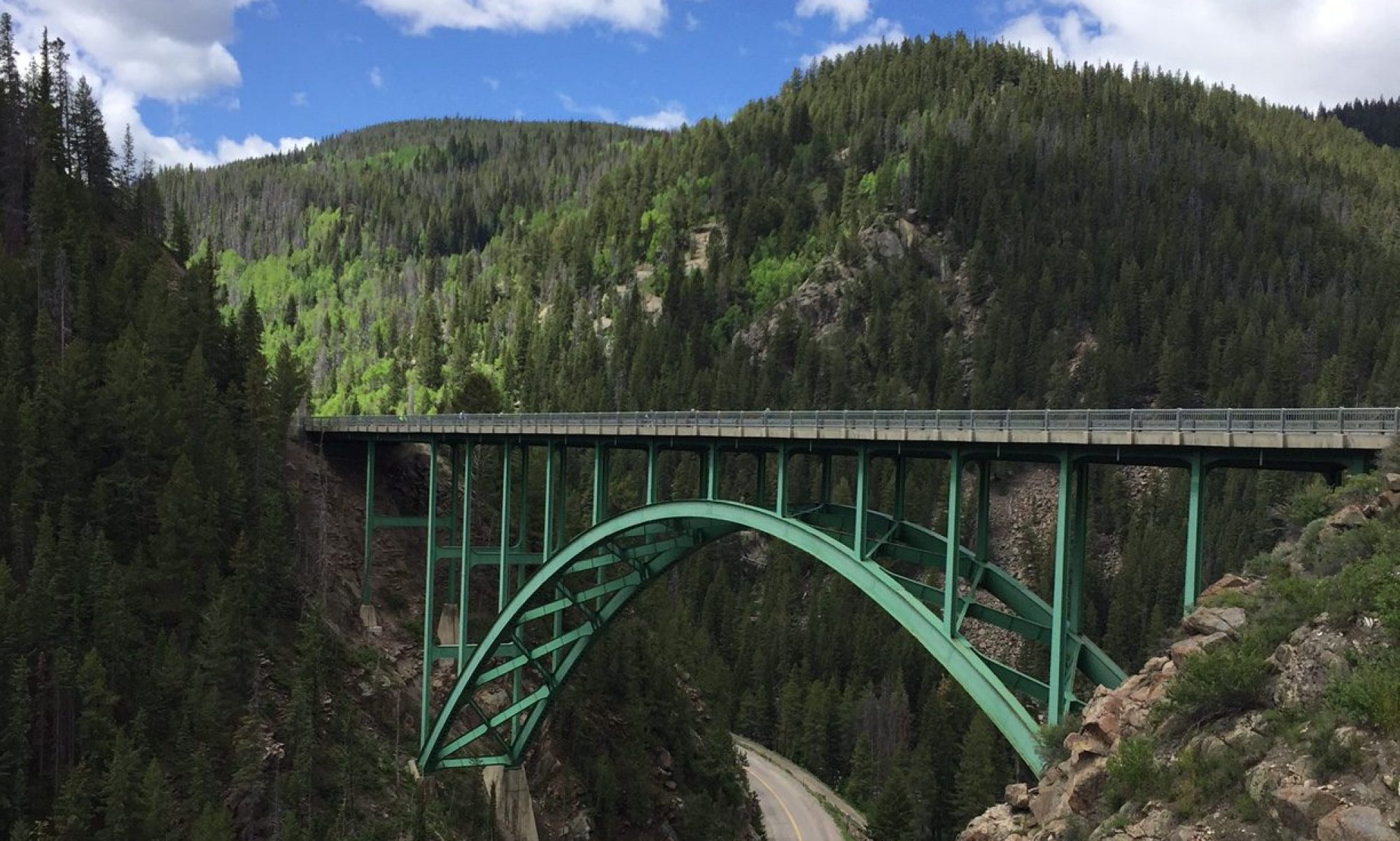BEDFORD, PENNSYLVANIA
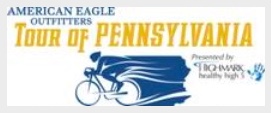
Officially, “The American Eagle Outfitters’ Tour of Pennsylvania presented by Highmark Healthy High 5.”
This was the first in hopefully what is the start of an annual event. The Tour of Pennsylvania. It joins the Tours of California, Georgia, and Missouri but was unique in that it was for Espoir riders, those elite international professionals ages 19-24. With $150,000 in prize money, it was believed to be the largest purse in the world for young riders. But it was a signature event for Pittsburgh 250, a commission to celebrate Pittsburgh’s 250th anniversary in 2008. Much of the sponsor money came from this budget and it also helped celebrate the 250th anniversaries of Bedford, Latrobe, and Ligonier thus they all played prominent roles in hosting the tour.
The race started on Tuesday in Philadelphia with a prologue time trial and criterium. On Wednesday it was a road race from Downingtown to Carlisle. On Thursday it was a stage race from Camp Hill to Bedford.
Friday’s race was from Bedford to Latrobe on U.S. Rte 30. This is a road I have traversed many times. While “only” 60 miles (95.76 km), this was predicted to be the stage to break open the race because of its two large mountain climbs. The first was out of Shellsburg up Bald Knob to the top of “Seven Mile Stretch.” As a kid, I remembered this route for the “Ship Hotel” which was a hotel built on the side of the mountain. It is only a memory now because after it closed and before it could be preserved, it burned to the ground in 2001. Arsonists surely.
I volunteered to be a course marshal in Bedford. I left the house at 5:30 a.m. for the three-hour drive to Bedford. Check-in time for volunteers was 9:00 a.m.
We had our orientation and I tried to decipher what the tour would really be about. I had followed the results on the Internet but the television coverage on Versus was a day behind and spotty at best. I had only seen the time trials.
I was especially curious if the cyclists had the entire road to themselves or just one lane westward. Answer: the entire road.
Our volunteer coordinator was Dave “Lumpy” Williams. He explained how good the Pennsylvania State Police were at sealing the highway to oncoming traffic. The front part of the caravan was all policemen and they forced any oncoming traffic to pull over and wait until the race passed. Our job was to be at intersections and make sure that vehicles did not enter the race course once the race was underway.
Lumpy was a very likable guy. When he talked about the race and used its proper name, he always ended with “presented by Highmark Health High-5” then did an “air” High-5. It never got old.
I volunteered to be as far out of town as I could get. Nothing against Bedford but some of the locals wanted to stay in town and I had my bike with me and wanted to ride. The positions were mostly for Bedford so Lumpy gave me the most distant one he had. I rode out to the intersection of Old U.S. 30 with U.S. 30.
Our job was also to be part ambassador. This was a role I was well suited for. Rather than tell a local they couldn’t use “their” road until the race passed, we could talk up the race and explain what it was all about. I met two families who had come out to the end of the street and I chatted with them the entire time.
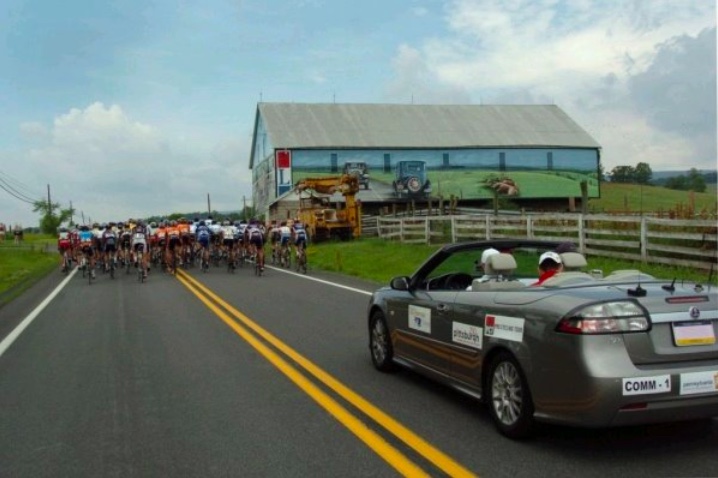
As soon as the race passed my course marshal location, I rode back into town where I had parked then got on the Pennsylvania Turnpike and went to Somerset. I then tried to get to Jennerstown as quickly as possible and almost lost. I was relieved that when I got to Jennerstown the caravan wasn’t there yet but make no mistake about it, these boys fly. Even climbing Bald Knob then Laurel Mountain, and some major hills in between, they would average more than 24 mph on this stage.
At the start of the day I had hoped that I would be assigned near the top of a mountain where one can see the cyclists going a bit slower. But the traveling road marshals were to be dropped off at the more remote locations including Laurel Summit, so I thought.
It was bright and sunny in Bedford when I left. Not so at the summit. It was chilly with light rain but mostly just chilly. The riders probably loved it while climbing, not so descending and I don’t think anyone had newspapers to hand to the riders to stuff in their jerseys for the cold descent to Ligonier.
When I arrived at the Laurel Hill summit parking was hard to find. There weren’t a lot of fans on the mountain, maybe 50-75, but enough had come out to cheer on the riders. There were even some cyclists who rode there, from Ligonier perhaps.
I found a couple of officials manning the KOM (King of the Mountains) point. I introduced myself as a volunteer. I was wearing my official American Outfitters Tour of Pa. staff shirt. The official told me I wasn’t needed there to help so I could go ahead and simple spectate.
And I did. The first riders, a group of 13 came over the summit to the delight of the crowd. But then three cars slipped into the race from the ski resort. The State Police quickly moved to remove them from the course and I quickly moved to seal off Laurel Summit Road from any other cars. I think it was supposed to be manned by a traveling marshal who just didn’t make it up the mountain in time. No other cars got on to the course.
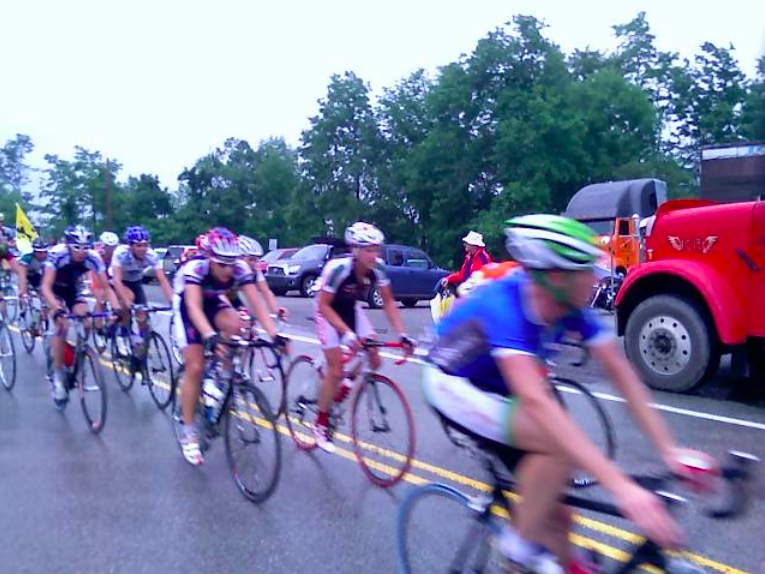
The peloton was about 18 minutes down. That was a sizable gap. Once they cleared the crowd dispersed. And I followed. I had hoped they would have two-laned the eastbound lanes of Rte 30 between Ligonier and Latrobe and I would have a chance to pass the peloton before they reached the finish. No chance. As it was, I drove down the mountain but still didn’t catch the rear of the race until Kingston Dam at Latrobe. In fact, I never saw the race convoy, just lots of cars traveling 25 mph. Done for the day, I went back to Ligonier to go riding.
Stage 4: Bedford to Latrobe (Friday, June 27, 2008)
(Start time: 10 a.m.) This 60-mile stage will push the riders to their limits with the most elevation gain and the hardest of all climbs in the event. After departing the town of Bedford, the roll will be easy for only 15 miles before turning upward for a difficult climb to Bald Knob Summit, the first KOM for the day. Bald Knob Summit is a 5.5-mile climb with grades of 10% to15 % and will surely decide the day’s top climbers, as they make their way up and over the Allegheny Mountains. After a slight rolling descent, the riders will again go uphill and crest the Laurel Hill Summit at mile 40 for the second KOM of the day. This 2-mile climb is shorter but with a very intense mountain pass that will also see grades of 15%. The descent into the last leg of the day will be fast, but will also have a flat section, rolling through Ligonier and following the river into Latrobe with a tricky sprint finish in the downtown area. This day is likely to be the hardest stage and will certainly separate the field, revealing who the potential leaders will be for the week.
I parked in Ligonier and first rode out U.S. 30 east towards Laughlintown, passing Ligonier Beach, the massive swimming pool next to the Loyalhanna Creek. It’s as pretty as it was when we lived there 40 years ago and even then it was 40 years old.
I came to State Route 381 and turned down the tree-lined road to Rector. It is bordered on both sides by post and rail fence, most of it belonging to Rolling Rock Farms and perhaps still, the Mellon Family. When we lived in Rector in the late 1960s, Richard King Mellon also lived here. It is here where they have the Rolling Rock Hunt.
Once in Rector, I rode up Old Linn Run Road as far as Devil’s Hole. Devil’s Hole is hard to find if you don’t know where to look. For years it had been a public swimming hole and sometimes people would drive from miles around to swim there. It was fed by a mountain stream and the water was always cold. In the late 60s and early 70s we helped to dam it every spring.
A large rock across the steam was the one that we would dive from. The water naturally in the pool area was about 3-4 feet deep. But each spring the locals would lift rocks and build a dam just downstream, often reinforcing it with plastic. Once it was dammed another 3 feet or so high the water in the middle was easily 6 feet deep. We sometimes would swim for hours and always our lips would be blue and our teeth would be chattering.
But a number of years ago the property owners, probably wisely, posted it with No Trespassing signs. In this day and age of lawsuits, who could blame them? The approach has been built up with a mound of dirt and had been grown in.
Linn Run Road used to connect all the way to Valley School of Ligonier but that too (the road, not the school) has been closed and probably has reverted to forest.
I turned and went back to the only intersection in Rector. I then passed the United Methodist Church and parsonage which is where we lived until 1971. I took Weaver Mill Road in front of the house to the top of the hill. It is short but steep. I remember getting my first 5-speed, one of those banana seat bikes with high handlebars. I was so proud the first time I was able to bike all the way up to the top of this hill. It was a little easier with the Trek Pilot 40 years later. Or I’m a little stronger.
I turned on Byers Lane and went over to Linn Run Road. I took Linn Run Road up to Linn Run State Park, but only as far as the Adams Falls area. Two things struck me about my ride up to the park. First how good of shape Linn Run Road was in. I never remember pavement this good on this road. And it wasn’t just my carbon fiber bike that does deliver a nice ride. The second was how bad the road was. Once I reached the state park the road deteriorated quickly. Had the road been in good shape I would have ridden much deeper into the park. But instead, I turned around for the nice descent back to Rector.
Once back to Rector Green I took Darlington Road which would take me up to Rte 711. This is an extremely steep hill which we would avoid in the winter when there was snow on the road. I wondered how steep it was and whether I could make it. Answer: Steep and yes. *
But I pedaled on up the mile hill without difficulty. I turned on 711 and took the road back to Ligonier. Before I reached the town, I turned on Peters Road which cuts over to Rte 30. It also cuts through Laurel Valley Golf Club one of the premier private golf courses in the world.
When I returned to Ligonier I hadn’t yet pedaled for 20 miles so I went down around the high school, the school I attended in 10th grade in 1970-1971. I cut through the parking lot and ended up on Carey School Road. It is a short climb, maybe 1/4 mile, but pretty steep. On my descent, I went 45 mph.
As far as the race:
Canadian David Veilleux (Kelly Benefit Strategies-Medifast) proved to be the fastest on Stage 4, taking a convincing victory ahead of new race leader Christoff Van Heerden (Konica Minolta) and Dutchman Dennis Luyt (Global Cycling). The peloton endured a soaking wet stage, with the sun only coming out at the finish line in Latrobe, where spectators gathered to watch the tricky sprint finale in the downtown area.
“There is less than a second between us and so I think tomorrow is going to decide everything,” said the French-Canadian stage winner Veilleux. “It was really hard today, constantly up and down even between the two KOM’s. The goal today was to stay with the climbers.
“My team has been riding great this week and I am looking forward to the next couple of stages,” he added.
The relatively short stage was also considered the toughest of the race. The fourth stage, under 100 kilometres in length, was intended to further open the time gaps between the top GC riders. While the terrain did separate the field, the top overall contenders are still only separated by one second each.
In the end Stage 4 left Van Heerden as the new overall race leader. The South African leads the race overall just one second ahead of Veilleux and American Stefano Barberi (Z Team).

Won how: 12-man bunch sprint


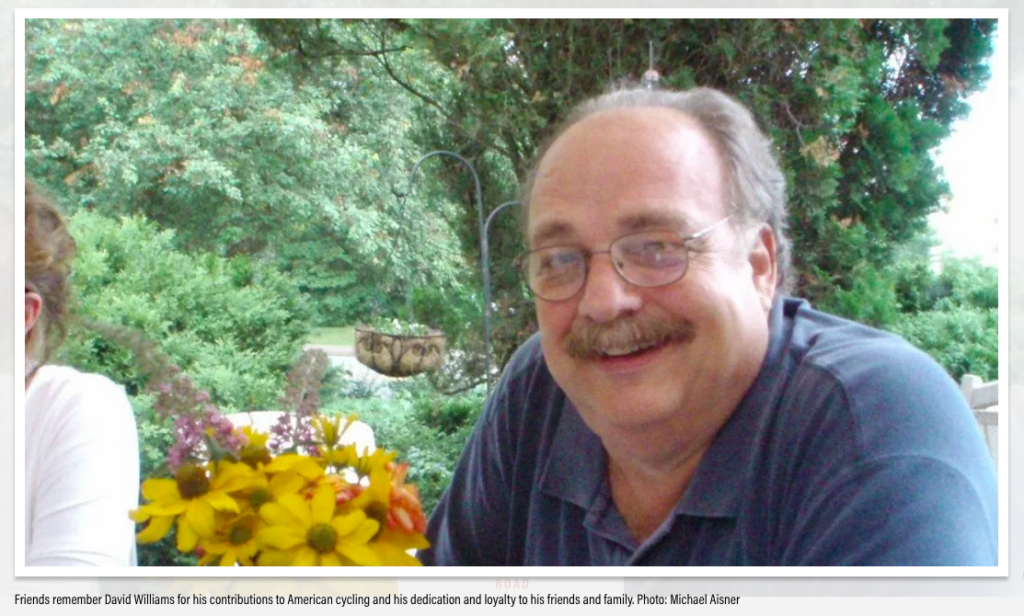
EPILOGUE: David “Lumpy” Williams died of a heart attack Tuesday, October 16, 2012, in San Rafael, California, at age 61.
